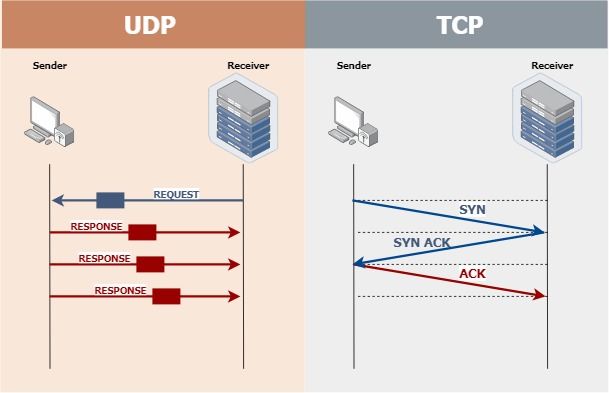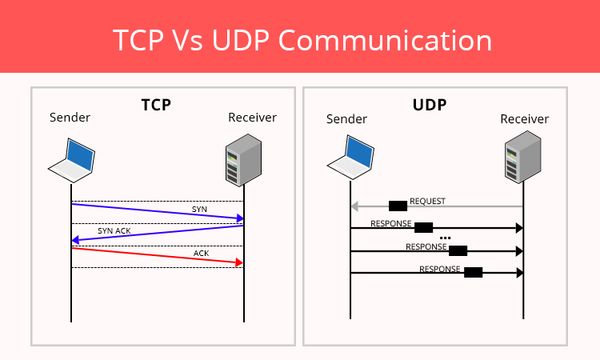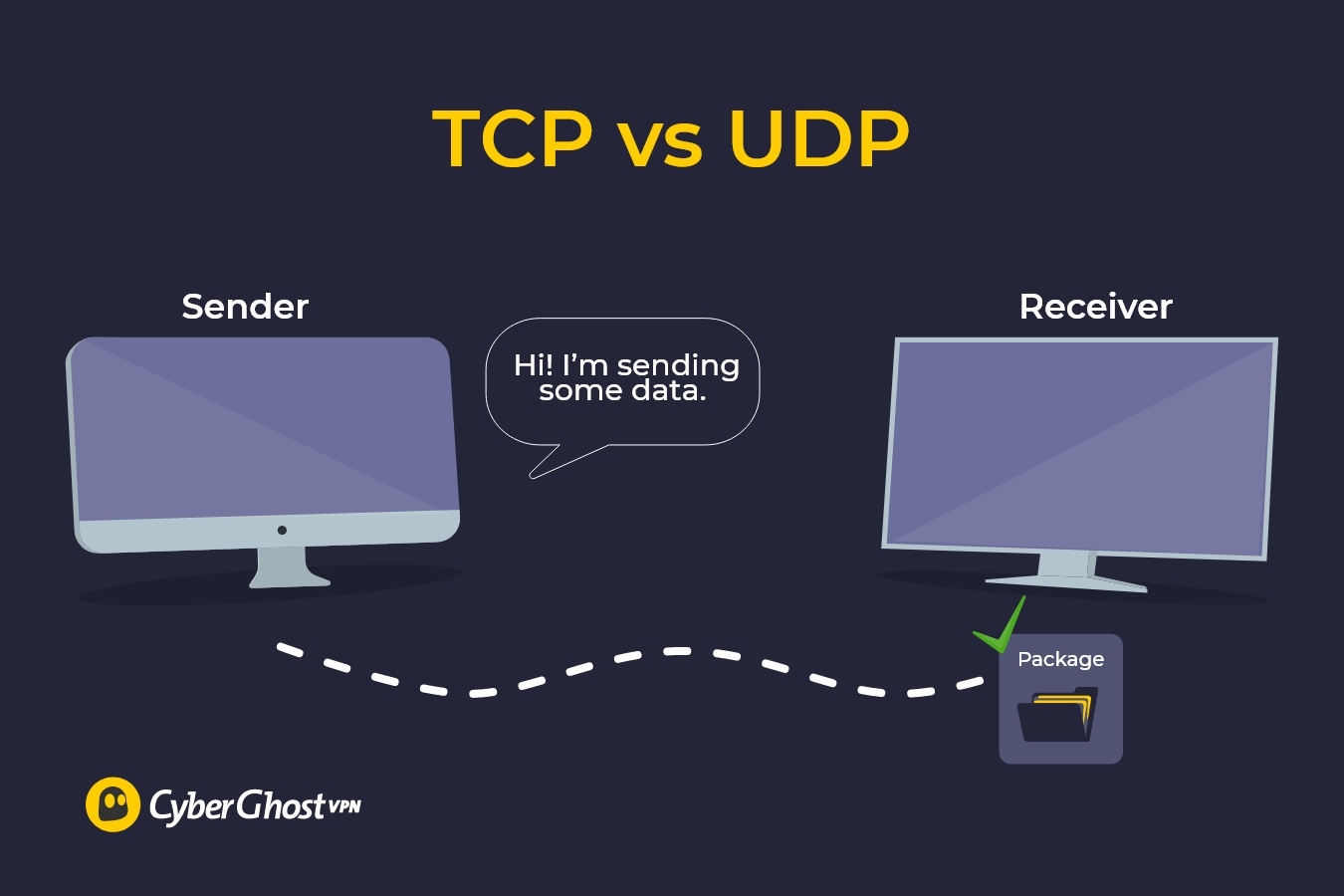
methods used for communication and data transfer. One such method is VMess, a protocol widely used for secure communication between servers and clients. However, to fully understand and utilize VMess effectively, it is essential to know whether it runs on TCP or UDP.
Overview of VMess and its usage
VMess, short for "Virtual Machine Encryption," is a protocol developed by the popular open-source project V2Ray. It is designed to provide a secure and reliable transport layer for network communications. VMess utilizes encryption and obfuscation techniques to ensure confidentiality and mitigate the risk of interception or censorship.
This protocol is commonly used in scenarios where privacy and security are paramount, such as tunneling traffic through firewalls or bypassing regional restrictions. By leveraging VMess, users can establish encrypted connections that prevent unauthorized access and protect sensitive information.
Importance of knowing whether VMess runs on TCP or UDP
Understanding whether VMess runs on TCP or UDP is crucial for several reasons. Firstly, it determines the underlying transport layer protocol used for communication. TCP (Transmission Control Protocol) is a connection-oriented protocol that focuses on reliability and guarantees the delivery of data packets in the correct order. UDP (User Datagram Protocol), on the other hand, is a connectionless protocol that prioritizes speed and efficiency but does not guarantee the order or delivery of packets.
Knowing whether VMess runs on TCP or UDP enables users to optimize their network configuration based on their specific needs. For instance, if reliability and the preservation of packet order are essential, choosing TCP as the transport layer would be appropriate. Conversely, if speed and efficiency are the primary concerns, opting for UDP would be more suitable.
In conclusion, understanding whether VMess runs on TCP or UDP is crucial for effectively utilizing this protocol and ensuring an efficient and secure communication experience. By aligning the transport layer with specific requirements, users can enhance their network performance and maintain the desired level of privacy and security.

Understanding VMess
Explanation of VMess protocol and its components
VMess is a powerful protocol that serves as a secure transport layer for network communications. Developed by the V2Ray open-source project, VMess utilizes encryption and obfuscation techniques to ensure confidentiality and protect against interception or censorship. Unlike traditional protocols, VMess operates on both TCP and UDP, giving users flexibility in choosing the transport layer that best suits their needs.
At its core, VMess consists of several components that work together to establish secure connections between servers and clients. These components include the messaging format, security configuration, and routing configuration.
The messaging format of VMess incorporates a combination of features such as encryption, data compression, and multiplexing. Encryption ensures that data exchanged between the server and client remains confidential, while data compression optimizes network performance. Multiplexing allows multiple streams of data to be transmitted simultaneously, enhancing efficiency and reducing latency.
The security configuration of VMess involves the use of encryption algorithms and authentication methods. By implementing strong encryption and authentication mechanisms, VMess ensures that only authorized parties can access and communicate through the protocol.
The routing configuration of VMess enables users to define how network traffic is directed within the system. This flexibility allows for customized routing rules based on factors such as destination IP address, user ID, or network conditions. With VMess, users have granular control over the flow of data, ensuring optimal performance and security.
Key features and advantages of using VMess
VMess offers several key features and advantages that make it a preferred choice for secure communication. Firstly, its support for both TCP and UDP allows users to adapt to various network environments and optimize their network configuration based on their specific needs.
Additionally, VMess offers advanced features such as traffic obfuscation and dynamic port allocation. Traffic obfuscation disguises the network traffic, making it difficult for third parties to identify and block the protocol. Dynamic port allocation enables VMess to dynamically assign ports for communication, making it harder for potential attackers to target specific ports.
Moreover, VMess provides enhanced security through its encryption and authentication mechanisms. Users can choose from a range of encryption algorithms to ensure the confidentiality of their data. The authentication methods incorporated in VMess prevent unauthorized access and ensure the integrity of the communication.
In conclusion, understanding the components of VMess and its features is crucial for utilizing the protocol effectively. Whether running on TCP or UDP, VMess offers a secure and reliable transport layer for network communications, allowing users to safeguard their data and maintain privacy even in challenging network environments. By leveraging the flexibility and advanced features of VMess, businesses and individuals can enjoy efficient and secure communication experiences.

TCP vs UDP
Difference between TCP (Transmission Control Protocol) and UDP (User Datagram Protocol)
TCP and UDP are two different transport layer protocols that are commonly used in network communications. Understanding the difference between TCP and UDP is essential in determining the transport layer that best suits the requirements of the VMess protocol.
TCP is a connection-oriented protocol that guarantees reliable data transmission. It establishes a connection between the sender and the receiver, ensuring that all packets are delivered in the correct order. TCP provides features such as error checking, flow control, and congestion control to ensure the integrity and efficiency of data transmission. However, the reliability and additional features of TCP come at the cost of increased overhead and latency.
On the other hand, UDP is a connectionless protocol that does not provide reliability guarantees. It sends packets without establishing a connection, allowing for faster and more efficient transmission. UDP is often used in applications where real-time data is crucial, such as video streaming or online gaming, as it prioritizes speed over reliability. However, UDP does not offer error checking or flow control, making it more susceptible to packet loss or corruption.
Pros and cons of using TCP and UDP for VMess
The VMess protocol supports both TCP and UDP as transport layers, giving users the flexibility to choose based on their specific needs and network conditions.
Using TCP for VMess provides reliable data transmission, ensuring that all packets are delivered accurately. TCP's error checking and flow control mechanisms make it suitable for applications that require guaranteed delivery and error-free data transfer. However, TCP's reliability comes with increased latency and overhead, which can impact performance in certain network environments.
On the other hand, using UDP for VMess prioritizes speed and efficiency. UDP's connectionless nature allows for faster transmission, making it ideal for real-time applications where timeliness is crucial. However, UDP does not guarantee reliability, and packets may be lost or arrive out of order. This can result in a less reliable communication experience, especially in unstable network conditions.
In conclusion, the choice between TCP and UDP for VMess depends on the specific requirements of the application and the network environment. TCP offers reliability at the cost of increased overhead, while UDP prioritizes speed at the risk of potential packet loss. By understanding the differences and considering the pros and cons of each protocol, users can make an informed decision to optimize the performance and reliability of their VMess communication.

VMess on TCP
How VMess can be implemented with TCP
Implementing VMess on TCP involves utilizing the Transmission Control Protocol as the transport layer for the VMess protocol. TCP provides a reliable and connection-oriented communication channel, ensuring that all data packets arrive in the correct order. This makes it suitable for applications that require guaranteed delivery and error-free data transfer.
To implement VMess on TCP, users need to configure their VMess server and client to use TCP instead of UDP as the transport layer. This involves specifying TCP as the protocol in the server and client configurations, along with other necessary settings such as ports and encryption methods.
Once configured, VMess on TCP allows for secure and reliable communication between the server and client. TCP's error checking and flow control mechanisms help maintain data integrity and ensure efficient transmission.
Advantages and limitations of using VMess over TCP
Using VMess over TCP offers several advantages. Firstly, TCP's reliability ensures that all data packets are delivered accurately, minimizing the risk of packet loss or corruption. This is particularly beneficial for applications that prioritize data integrity, such as file transfers or secure communications.
Additionally, TCP's connection-oriented nature allows for easy establishment of a communication channel, making it suitable for scenarios where maintaining a consistent connection is crucial.
However, implementing VMess over TCP also has its limitations. TCP's reliability and additional features come at the cost of increased overhead and latency. This can impact performance, especially in environments with high network congestion or limited bandwidth. Therefore, in situations where real-time data transmission or low latency is essential, using VMess over TCP may not be the most optimal choice.
In conclusion, implementing VMess on TCP provides a reliable and secure communication channel for the VMess protocol. It offers benefits such as guaranteed delivery and error-free data transfer. However, the trade-off is increased overhead and latency compared to UDP. By considering the specific requirements and network conditions, users can decide whether VMess on TCP is the most suitable option for their applications.

VMess on UDP
How VMess can be implemented with UDP
Implementing VMess on User Datagram Protocol (UDP) involves utilizing UDP as the transport layer for the VMess protocol. UDP is a connectionless protocol that provides a lightweight and fast communication channel. This makes it suitable for applications that prioritize low latency and real-time data transmission.
To implement VMess on UDP, users need to configure their VMess server and client to use UDP as the transport layer. This involves specifying UDP as the protocol in the server and client configurations, along with other necessary settings such as ports and encryption methods.
Once configured, VMess on UDP allows for efficient and speedy communication between the server and client. UDP's lack of reliability measures, such as error checking and flow control, enables faster transmission and reduced overhead compared to TCP.
Advantages and limitations of using VMess over UDP
Using VMess over UDP offers several advantages. Firstly, UDP's minimal overhead and lack of reliability measures result in lower latency and faster transmission. This makes it ideal for real-time applications such as video streaming or online gaming, where timely delivery of data packets is crucial.
Additionally, UDP's connectionless nature allows for easier setup and teardown of communication channels, making it suitable for scenarios where frequent connections need to be established and terminated.
However, utilizing VMess over UDP also has its limitations. UDP does not guarantee delivery or maintain packet order, making it susceptible to packet loss or corruption. As a result, applications that require guaranteed delivery and error-free data transfer may not be well-suited for VMess over UDP.
In conclusion, implementing VMess on UDP provides a fast and efficient communication channel for the VMess protocol. It offers benefits such as low latency and streamlined transmission. However, the trade-off is the lack of reliability measures, which may not be suitable for all application requirements. By considering the specific needs and network conditions, users can determine whether VMess on UDP is the most appropriate choice for their applications.







